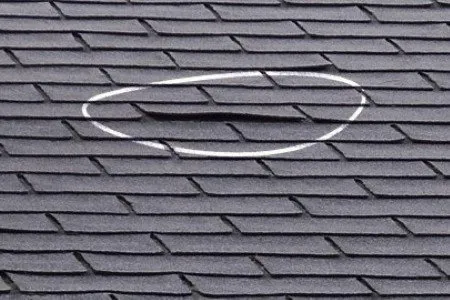Roof shingles are a popular and durable roofing material, providing protection and enhancing the aesthetics of a home. However, like any other roofing material, roof shingles can develop problems over time. Understanding common roof shingles problems, their causes, and potential solutions is essential for homeowners to maintain the integrity of their roofs. In this article, we will explore some of the most common roof shingles problems, offering insights into their causes and providing practical solutions to address them effectively.

The Importance of Addressing Roof Shingles Problems
Roof shingles problems should not be ignored, as they can lead to significant damage if left unattended. Timely identification and resolution of these issues can help extend the lifespan of the roof, prevent leaks, and avoid costly repairs. Regular roof maintenance and inspections are crucial in identifying potential problems before they escalate.
Curling or Cupping Shingles
One common problem with roof shingles is curling or cupping. Curling occurs when the edges of the shingles turn upward, while cupping is the opposite, with the shingle edges turning downward. These issues are often caused by improper installation, inadequate ventilation, or age-related wear and tear. To address curling or cupping shingles, it is recommended to replace the affected shingles and improve ventilation in the attic.
Missing or Damaged Shingles
High winds, severe weather conditions, or improper installation can lead to missing or damaged shingles. Missing shingles expose the roof to potential water damage and leaks. Damaged shingles, such as those with cracks, splits, or granule loss, can compromise the roof’s integrity. Repairing or replacing the missing or damaged shingles promptly is crucial to prevent further damage and maintain the roof’s functionality.
Algae and Moss Growth
Algae and moss growth on roof shingles not only detract from the aesthetic appeal but can also cause damage. These organisms thrive in damp and shaded areas, especially in humid climates. Regular cleaning and maintenance can help prevent algae and moss growth. Additionally, zinc or copper strips installed near the roof’s peak can help inhibit the growth of these organisms.
Roof Leaks
Roof leaks are a serious problem that can lead to water damage, mold growth, and structural issues. Leaks can occur due to various factors, such as damaged shingles, improperly sealed flashing, or deteriorated underlayment. It is crucial to identify the source of the leak and address it promptly. Depending on the severity of the leak, repairs may involve replacing damaged shingles, resealing flashing, or patching the affected area.
Regular Roof Maintenance and Inspections
Prevention is key to avoiding roof shingles problems. Regular roof maintenance and inspections are essential to catch any issues early on. It is recommended to inspect the roof at least once a year, preferably in the spring or fall, and after severe weather events. Look for signs of damage, wear, or any other issues that require attention. Cleaning the roof and gutters regularly can also help prevent debris buildup and potential problems.
Conclusion:
Being aware of common roof shingles problems and their causes empowers homeowners to take proactive measures in maintaining the integrity of their roofs. Whether it’s addressing curling shingles, replacing missing or damaged shingles, dealing with algae growth, or repairing roof leaks, timely action is essential. Regular roof maintenance, inspections, and prompt repairs can help prolong the lifespan of the roof, protect the home, and avoid costly damage. By staying vigilant and addressing roof shingles problems promptly, homeowners can ensure their roofs remain in optimal condition for years to come.



Leave a Reply